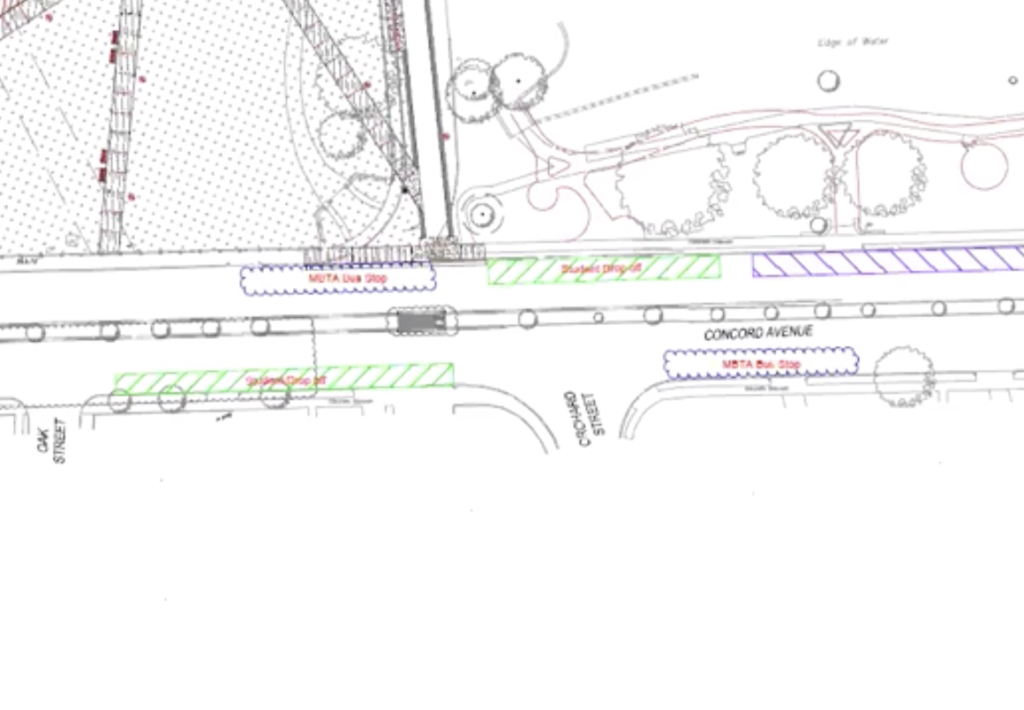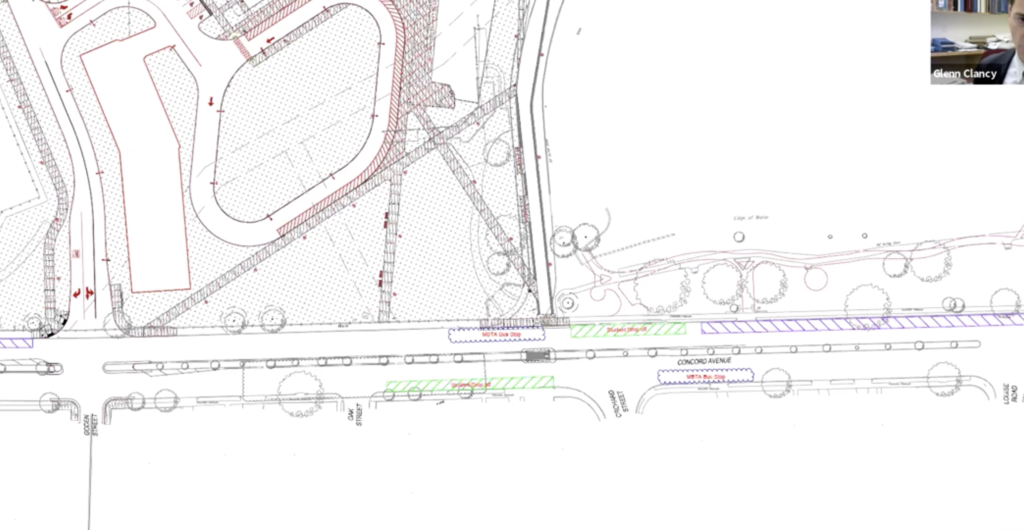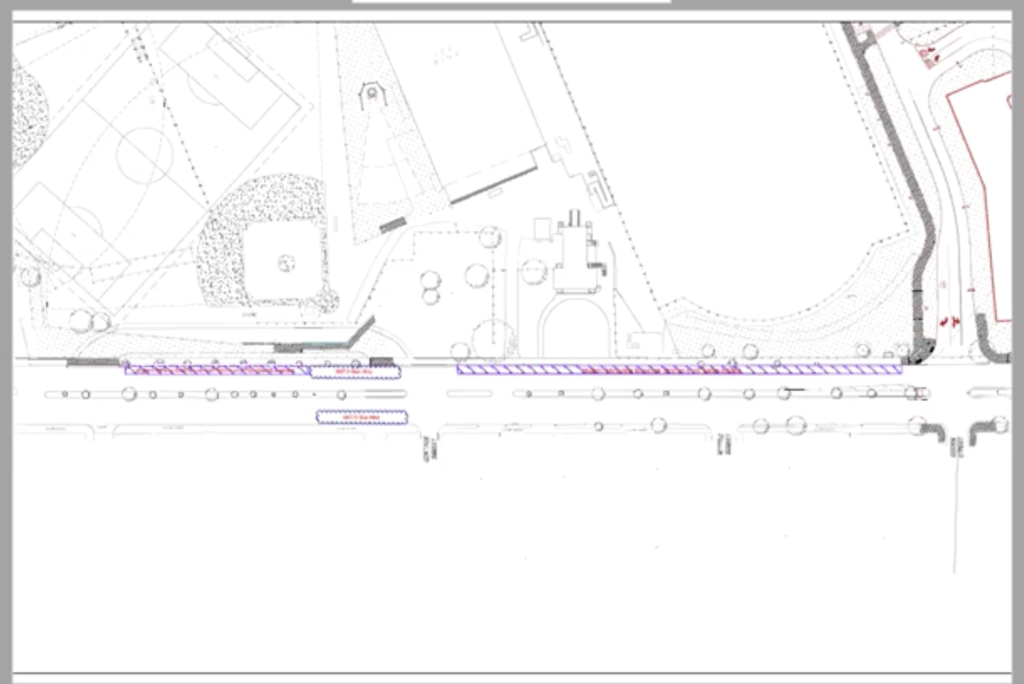Photo: The new stripping along Concord Avenue at Goden Street (Credit: Belmont Police Twitter account)
Concord Avenue will be just a tad busier starting Sept. 8 as the Belmont Select Board unanimously approved 100 temporary student parking spaces along the westbound (from Cambridge to Belmont Center) lane of Concord Avenue as the high school wing of the new Belmont Middle and High School opens its doors for the first time.
In addition, the board approved drop off areas for students to exit cars bringing them to the school, according to Glenn Clancy, Director of Community Develop who made the presentation at the board’s Monday, Aug. 31 meeting.
“The beautiful thing about this plan is nothing’s new,” said Clancy, noting that construction workers have been using the same spots for the past two years that students are coming to, so drivers are familiar with vehicles along the roadway.
Approved by the Transportation Advisory Committee on July 15 with guidance from the Planning Board, the parking spaces are located at three locations:
• Across from the Belmont Public Library between the two curb cuts of the familiar turn-in parking area.
• Running across from Cottage and Goden streets, and
• Along Clay Pit Pond from the school’s entrance to Underwood Street.
The spaces will be issued by a lottery system, said John Phelan, Belmont Superintendent.
The spaces will be available to students until the completion of the Middle School portion in August 2023 when on-site parking becomes accessible.
While the TAC has delayed making a recommendation for the location of drop off and pick up spots due to the view that having a travel lane, bike path and parking along the street was “too concentrated” creating safety issues especially for bikers, said David Coleman, a TAC member, Phelan told the board there was an immediate need to have those spaces identified as the school year was less than two weeks away.
The placement of the drop off/pick up spots would be:
• Heading eastbound (to Cambridge): Between Oak and Orchard streets to allow students to use the newly-lined crosswalk which will be staffed by a crossing guard.
• Westbound: Across from Orchard Street that allows students to get out of the right side of the vehicle onto the sidewalk.
Phelan said the school district did not want to use a new loop in front of the school’s entrance as it will be reserved for buses. “We always wanted to separate cars, buses, walkers and bikers,” he said while construction continues for the next two years. “All the cars pulling into the driveway would create a walking conflict for those … coming from Harris Field … to get on the campus.”
Phelan said an additional drop-off site could be at the turn-off area across from the library.
Once the middle school is open, “we’ll have plenty of room for a pickoff/drop off on the site,” he said.
“That does not mean that this is a perfect scenario. We all know we are in a two-year temporary phase where traffic will be extremely congested in this area,” said Phelan.
For the Select Board’s Mark Paolillo, the current plan has his “heart in my mouth” concerning the likelihood that parents will simply stop along the entire stretch of Concord as an impromptu drop-off spot when traffic is congested.
“We need to have police presence… to supervise this,” said Paolillo. Phelan said Belmont Police Chief James MacIsaac will be present for the first two weeks of school to “observe everything that’s happening.”
While saying there isn’t any way to know the demand for two drop-off locations, “I think we all just have to realize that with experience in the opening days of school we might have to make some adjustments,” said Select Board member Roy Epstein. “But I think this is the logical starting point.”





